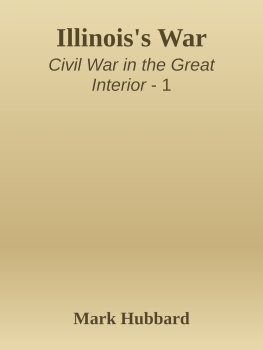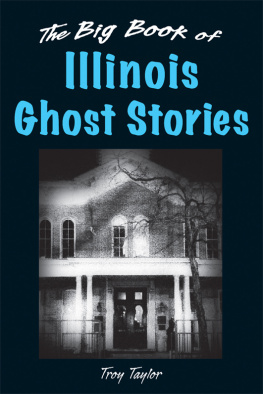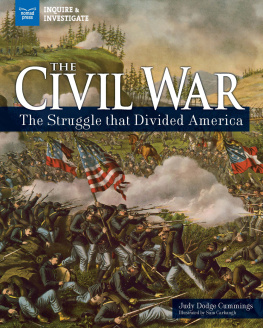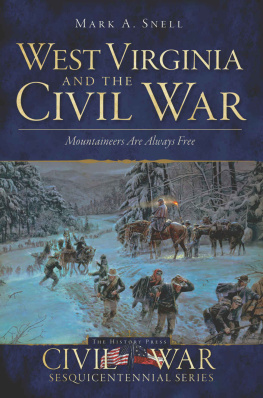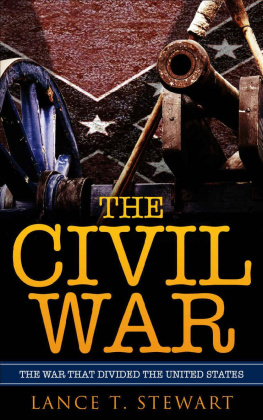Illinoiss War
The Civil War in the Great Interior
Series Editors
Martin J. Hershock and Christine Dee
Ohios War: The Civil War in Documents, edited by Christine Dee
Missouris War: The Civil War in Documents, edited by Silvana R. Siddali
Indianas War: The Civil War in Documents, edited by Richard F. Nation
and Stephen E. Towne
Kansass War: The Civil War in Documents, edited by Pearl T. Ponce
Illinoiss War: The Civil War in Documents, edited by Mark Hubbard
forthcoming:
Michigans War: The Civil War in Documents, edited by John W. Quist
Wisconsins War: The Civil War in Documents, edited by Chandra Manning
Illinoiss War
The Civil War in Documents
* * *
Edited by Mark Hubbard
Ohio University Press
Athens
Ohio University Press, Athens, Ohio 45701
www.ohioswallow.com
2013 by Ohio University Press
All rights reserved
To obtain permission to quote, reprint, or otherwise reproduce or distribute material from Ohio University Press publications, please contact our rights and permissions department at (740) 593-1154 or (740) 593-4536 (fax).
Printed in the United States of America
Ohio University Press books are printed on acid-free paper
20 19 18 17 16 15 14 13 5 4 3 2 1
Cover art: Mr. Lincoln. Residence and horse. In Springfield, Illinois, as they appeared on his return at the close of the campaign with Senator Douglas. Lithograph by Louis Kurz. Courtesy Library of Congress LC-DIG-pga-10932.
Library of Congress Cataloging-in-Publication Data
Illinoiss war : the Civil War in documents / edited by Mark Hubbard.
p. cm. (The Civil War in the great interior)
Includes bibliographical references and index.
ISBN 978-0-8214-2010-2 (pb : alk. paper) ISBN 978-0-8214-4430-6 (electronic)
1. IllinoisHistoryCivil War, 18611865Sources. 2. United StatesHistoryCivil War, 18611865Sources. I. Voss-Hubbard, Mark.
E505.I46 2013
973.7dc23
2012032542
For Kim
Series Editors Preface
The Civil War in the Great Interior series focuses on the Middle West, as the complex region has come to be known, during the most critical era of American history. In his Annual Message to Congress in December of 1862, Abraham Lincoln identified the great interior region as the area between the Alleghenies and the Rocky Mountains, south of Canada and north of the culture of cotton. Lincoln included in this region the states of Ohio, Indiana, Michigan, Wisconsin, Illinois, Missouri, Kansas, Iowa, Minnesota, and Kentucky; the area that would become West Virginia; and parts of Tennessee and the Dakota, Nebraska, and Colorado territories. This area, Lincoln maintained, was critical to the great body of the republic not only because it bound together the North, South, and West but also because its people would not assent to the division of the Union.
This series examines what was, to Lincoln and other Americans in the mid-nineteenth century, the most powerful, influential, and critical area of the country. It considers how the people of the Middle West experienced the Civil War and the role they played in preserving and redefining the nation. These collections of historical sourcesmany of which have never been publishedexplore significant issues raised by the sectional conflict, the Civil War, and Reconstruction. The series underscores what was unique to particular states and their residents while recognizing the values and experiences that individuals in the Middle West shared with other Northerners and, in some cases, with Southerners.
Within these volumes are the voices of a diverse cross-section of nineteenth-century Americans. These include African Americans, European immigrants, Native Americans, and women. Editors have gathered evidence from farms and factories, rural and urban areas, and communities throughout each state to examine the relationships of individuals, their communities, the political culture, and events on the battlefields. The volumes present readers with layers of evidence that can be combined in a multitude of patterns to yield new conclusions and raise questions about prevailing interpretations of the past.
The editor of each volume provides a narrative framework through brief chapter introductions and background information for each document, as well as a timeline. As these volumes cannot address all aspects of the Civil War experience for each state, they include selected bibliographies to guide readers in further research. Documents were chosen for what they reveal about the past, but each also speaks to the subjective nature of history and the decisions that historians face when weighing the merits and limits of each piece of evidence they uncover. The diverse documents included in these volumes also expose readers to the craft of history and to the variety of source materials historians utilize as they explore the past.
Much of the material in these works will raise questions, spark debates, and generate discussion. Whether read with an eye toward the history of the Union war effort, a particular state or region, or the Civil Wars implications for race, class, and gender in America, the volumes in The Civil War in the Great Interior help us considerand reconsiderthe evidence from the past.
Martin J. Hershock
Christine Dee
Preface
We live in revolutionary times, observed the Chicago writer and newspaper reporter Horace White, ten days after the secession of South Carolina. One hundred and fifty years have passed and Whites words continue to resonate. An enormous corpus of writing confirms the central place that the Civil War holds in the story of America, even as that story is continually debated and reinterpreted. The countless roundtables and meetings devoted to Civil Warrelated topics; the millions who visit Civil War battlefields, monuments, and museums each year; the popularity of Civil War artifacts and memorabilia; and the many commemorations that Americans attend bear witness to the publics enduring connection to the Civil War. Instinctively we recognize the war was a transformative moment in our past, and we seek to give meaning to it in our present.
This modest volume treats the meaning of the sectional conflict for a diverse people residing in what was, at the time, the most consequential state in the Union. It tells the dramatic story of Illinoiss role in the sectional crisis, as well as the multiple ways in which the revolutionary times that White spoke of recast the destiny of the state and its citizens. The documents that constitute the bulk of Illinoiss War illuminate the actions and experiences of Illinoisans as they struggled to come to terms with slavery and western expansion, with explosive economic growth, with terrible bloodshed and wartime sacrifice, and with postwar efforts to reconstruct the South and give substantive meaning to black freedom. The documents reveal the deep-seated divisionsethnic, regional, economic, and politicalthat shaped the bitter and sometimes violent conflicts among Illinoisans over the wars origins, prosecution, and legacies. Illinoiss War reveals the struggle of the states free black population as it battled against racial oppression before, during, and after the war, and it presents the perspectives and experiences of Illinois women as they carved new political and economic roles for themselves. It traces the profound economic transformation that Illinois underwent in the mid-nineteenth century through the voices of travelers, civic boosters, urban workers, and rural farmers. It uses correspondence between soldiers and their loved ones back home to show how Illinoisans interpreted the costliest war in American history. Throughout, Illinoiss War treats these and other aspects of the states history through the complex and sometimes contradictory views of its diverse people, from the well known to the obscure.

